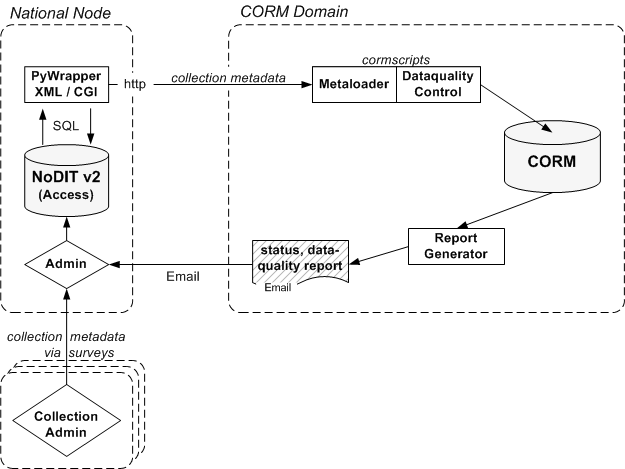This page is outdated and just kept for history. Natural Collections metadata are now addressed by The Global Registry of Biorepositories (GRBio).
The BioCASE project (2001-2005) uniquely addressed the problem of the many valuable but unknown natural history collections, most of them not available online, by gathering metadata about entire biological collections. For Europe in nearly every country a National Node was set up to do continuous inventories on their national biological collections. To ease the managing of this metadata, BioCASE developed an MS Access application called NoDIT.
All metadata was centrally cached in the so called CORM database and is searchable online through the regular BioCASE interface (now defunct, see below) or directly through a simple CORM interface. The system uses the same BioCASe protocol as the unit network to query data sources - in this case the National Nodes database. But it is also possible to provide simple static XML files online in place of a database. This was especially useful for existing national systems in some countries.
The BioCASE project developed a new multilingual standard to exchange this kind of collection metadata. Based on Dublin Core and other standards, the version implemented in BioCASE is available as an XML schema or in an older version as a pdf.
The BioCASE metadata schema was further developed by a Biodiversity Information Standards (TDWG) group called Natural Collections Descriptions. The group has extended, improved and generalised the BioCASE schema for global usage with strong input from the library community.
BioCASE has now handed over its metadata collection to the projected International Index of Natural History Collections, to be build as the result of an agreement between GBIF, the Royal Botanic Gardens, Edinburgh, and TDWG.

